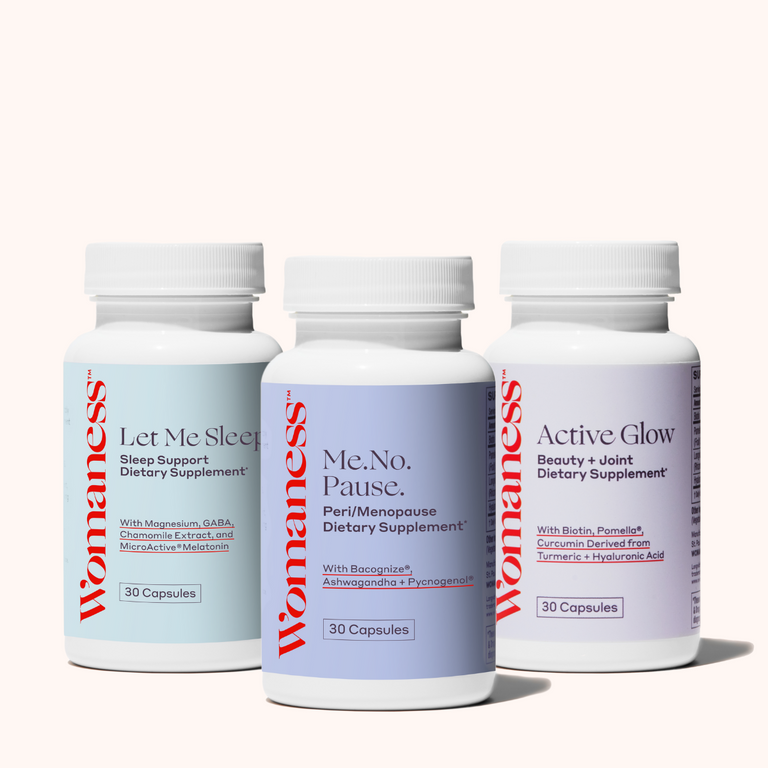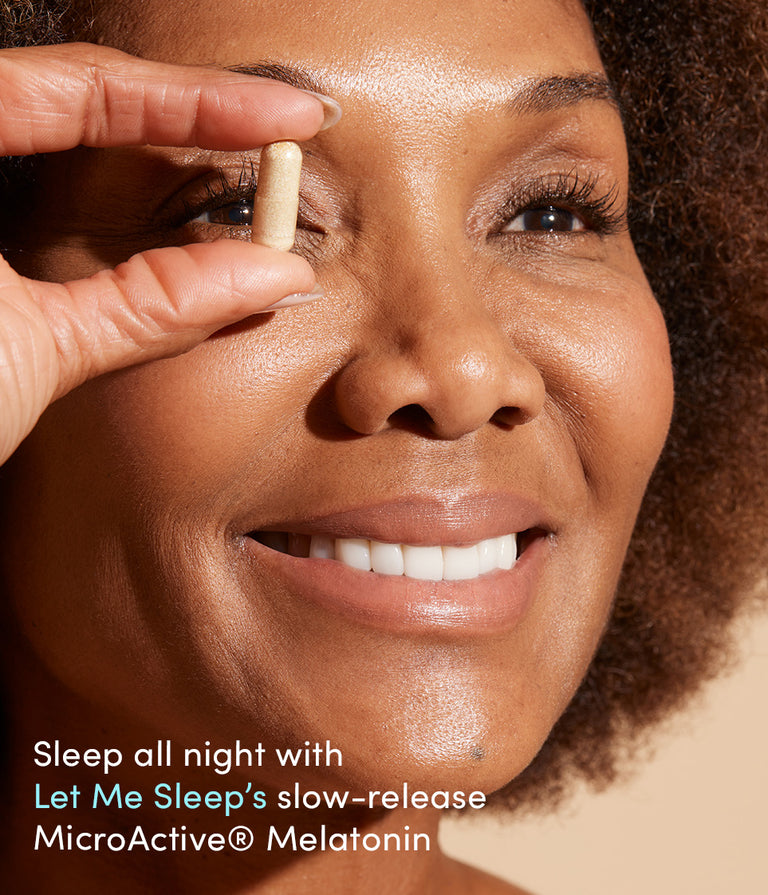By Kim Schlag, Personal Trainer & Nutrition Coach 5-Minute Read
 Kim Schlag is a personal trainer & nutrition coach who helps women over 40 age stronger, improve their body composition, and heal their relationship with food and their bodies through her eight-week course Fitter After 40.
Kim Schlag is a personal trainer & nutrition coach who helps women over 40 age stronger, improve their body composition, and heal their relationship with food and their bodies through her eight-week course Fitter After 40.
Women who came of age in the era of 80s supermodels and 90s waifs had it drilled into them that exercise's purpose is to burn calories. Torching our body fat was THE reason we followed along in our living rooms with Jane Fonda and Tami Lee Webb and thighmastered in front of Must-See TV.
To this day, many grown women think in terms of “burning off” the meal they just ate or “earning” one they’re about to eat with sweat equity, which is understandable considering the diet culture we’ve been steeped in for darn near our entire lives.
I want you to know that there is so much more to exercise than calories burned (even if your goal is weight loss!).
"I want you to know that there is so much more to exercise than calories burned (even if your goal is weight loss!)"
Will exercise burn calories? Yes. But the main driver of fat loss will always be nutrition. Turning your focus away from calories burned as the main purpose of exercise helps you:
-
Perform the exercise optimally (this is especially true of strength training)
-
Improve your relationship with exercise
-
Broaden your vision as to the priceless and varied benefits of exercise
Let’s dive into the three forms of exercise menopausal women should do and talk about some of those amazing benefits.
1. DAILY MOVEMENT
You’ve heard the advice to get 10,000 steps a day. What you might not know is that that 10K number wasn’t arrived at by scientists, but by marketing executives. In the mid 1960s a Japanese company invented a pedometer they named Manpo-Kei, which translates to “10,000 steps meter” (the Japanese character for 10,000 looks like a person walking) and thus was born our obsession with 10K a day.
So is 10K the magic number it’s been made out to be? Not exactly, but it’s not far off either. There were two large meta-analyses (that’s the gold standard of studies) published in the last year that support a good dose of daily movement for—get this—reducing all-cause mortality.
Not dying is a pretty sweet benefit if you ask me.
The most recent meta-analysis found that, for adults younger than 60 years old, there was a progressively decreasing risk of mortality associated with increasing steps until between 8,000 - 10,000 steps per day. For adults over 60, there was a decreasing risk until 6,000 - 8,000 steps per day.
If reducing your chance of dying isn’t inspiration enough to get you up and walking, know that walking can also reduce stress, improve sleep, manage your weight, improve your mental health, and help prevent or manage osteoporosis, type 2 diabetes, and heart disease.
It’s also the form of exercise with the lowest barrier to entry. You don’t even have to change your clothes!

2. RESISTANCE TRAINING
Did you know that you lose 3-8% of your muscle mass per decade after the age of 30 if you don’t do something to prevent it? If you’re thinking, “That sounds bad, but I'm not quite sure why,” here’s why:
-
If you want to be a woman who can get off the toilet on her own in her 70s, you need muscle
-
If you want to squat down to pick something off the floor and stand back up, you need muscle
-
Ever lose weight and think, “Hmm...where are my toned arms?” They're on the other side of building muscle, that’s where
-
According to the U.S. CDC, every year more than 3 million older adults are treated in the ER for falls. Want to prevent that? Build more muscle
Resistance training (along with eating enough protein) is the key to muscle building. You can resistance train with dumbbells, kettlebells, barbells, machines, even bands and body weight (but don’t use only those last two as they’re incredibly difficult to progress, which is vital to successfully building muscle.)
If you’re intimidated at the idea of lifting for the first time, you’re not alone. I promise you’re never too old. (I lifted for the first time at age 43!) Try just one exercise. Squats are good to start with because they're an everyday motion. (How often do you sit on a chair and stand back up?) You can do this.

3. HIGH-IMPACT WEIGHT-BEARING EXERCISE
The statistics about osteoporosis are jaw dropping:
-
1 in 3 women will break a bone due to osteoporosis in their lifetime
-
Fractures from osteoporosis are more common than heart attack, stroke, and breast cancer combined
-
A women over 50 has a risk of death due to a hip fracture during her remaining life that's equivalent to her risk of death from breast cancer
Because of the integral role estrogen plays in bone formation, the menopause transition is the time of the most rapid bone loss women experience in their lifetime.
The incredible thing is there’s untapped osteoporosis prevention you can employ. There's a dietary piece beyond the scope of this article, but from an exercise perspective, there is much you can do.
When you resistance train, your muscles pull on your bones, which strengthens them. This is hugely impactful for osteoporosis prevention. Walking is a form of low-impact weight-bearing exercise, which certainly helps; but high-impact weight-bearing exercise is even more effective at building and maintaining bone density than low-impact weight-bearing exercise.
High-impact weight-bearing exercise includes things like:
-
Jumping (think jump rope, jump squats, jump lunges, lateral heidens)
-
Stair stepping
-
Running
-
Hiking
-
Tennis
Try adding some of these high-impact activities into your exercise programming, keeping in mind that if you have osteoporosis, they might not be appropriate for you. Consult with your doctor.
*You don’t have to add all this exercise at once. Here’s what I suggest:
1. First, focus on walking daily, aiming for 6 - 10K steps daily
2. Then add in strength training 2 - 4x per week, focusing on getting stronger over time
3. After you're consistently doing the above, add in some high-impact weight-bearing exercise (this could count toward your daily steps, not be in addition to them)
If you want more direct help consistently incorporating these forms of exercise into your life (including personalized form feedback), please check out my eight-week course Fitter After 40. It’s a complete system for women over 40 to get in their best shape yet, including nutrition, exercise, and mindset.
More in Health & Wellness
Food, Exercise & Losing Weight in Menopause
Fitter, Stronger, Happier
The Ins & Outs of Intermittent Fasting in Menopause
Disclaimer: This article is intended for informational purposes and is not intended to replace a one-on-one relationship with a physician or medical advice. Womaness strives to share the knowledge and advice from our own network of experts and our own research. We encourage you to make healthcare decisions based in partnership with a qualified healthcare professional.


